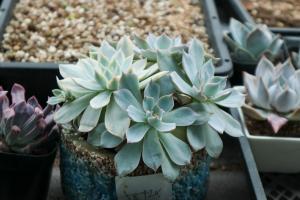How to Care for a Newly Planted Japanese Maple Tree
Japanese maple trees are prized for their stunning foliage and delicate beauty. If you are lucky enough to have recently planted one in your garden, it's important to take proper care of it to ensure it thrives for years to come. Here are some essential tips to help you care for your newly planted Japanese maple tree.
Choose the Right Location
When planting your Japanese maple tree, it's crucial to choose a location that provides the right conditions for it to grow. Japanese maples prefer partial shade or dappled sunlight, and they like moist, well-drained soil. Make sure to plant your tree in an area that offers protection from strong winds, as high winds can damage the delicate branches.
Water Your Japanese Maple Regularly
Newly planted Japanese maple trees need regular watering to help them establish a strong root system. Water your tree deeply once or twice a week, depending on how quickly the soil dries out. Avoid overwatering, as this can lead to root rot and other issues. It's also important to mulch around the base of the tree to help retain moisture and suppress weeds.
Fertilize Your Tree Annually
Japanese maple trees don't require frequent fertilization, but it's a good idea to fertilize them once a year with a slow-release fertilizer. Apply the fertilizer in early spring before the tree starts producing new growth. Avoid using fertilizer with high levels of nitrogen, as this can cause excessive leaf growth at the expense of root development.
Prune Your Japanese Maple Tree Carefully
Pruning is an essential part of caring for a Japanese maple tree, but it's important to be careful when doing so. Prune your tree lightly in the late winter or early spring to remove any damaged or diseased branches. You can also remove any branches that are crossing or rubbing against each other. Avoid heavy pruning or cutting back more than 10 percent of the tree's foliage at once, as this can cause stress and impact its overall health.
Protect Your Tree from Pests and Diseases
Japanese maple trees are vulnerable to a range of pests and diseases, including aphids, spider mites, and powdery mildew. To protect your tree from these issues, keep an eye out for any signs of infestation or disease, and take action promptly. You can use insecticidal soap or neem oil to control pests, and fungicides to treat mildew. It's also a good idea to keep your tree healthy overall through proper watering, fertilizing, and pruning, as this can help prevent many pest and disease issues from arising in the first place.
Conclusion
Caring for a newly planted Japanese maple tree requires attention and patience, but the rewards are more than worth it. By providing the right growing conditions, watering and fertilizing your tree regularly, pruning carefully, and protecting it from pests and diseases, you can help your tree thrive and become a beautiful addition to your garden for years to come.

 how many times do yo...
how many times do yo... how many planted tre...
how many planted tre... how many pine trees ...
how many pine trees ... how many pecan trees...
how many pecan trees... how many plants comp...
how many plants comp... how many plants can ...
how many plants can ... how many plants and ...
how many plants and ... how many pepper plan...
how many pepper plan...































